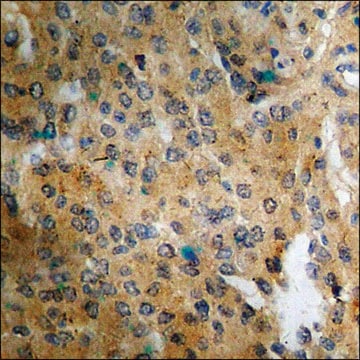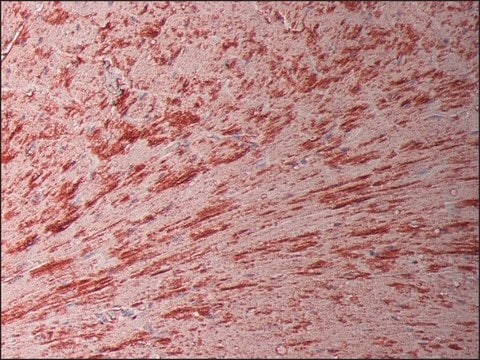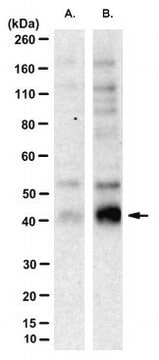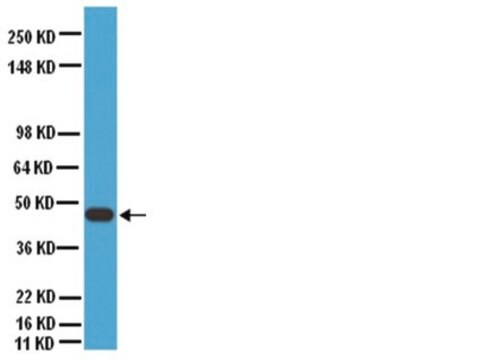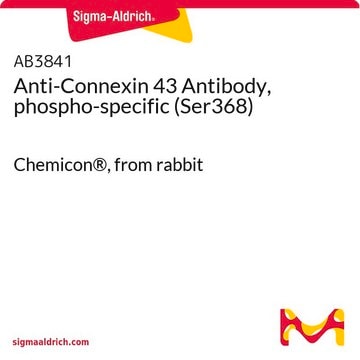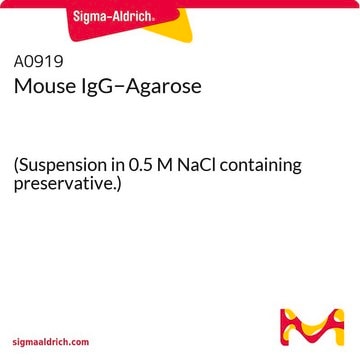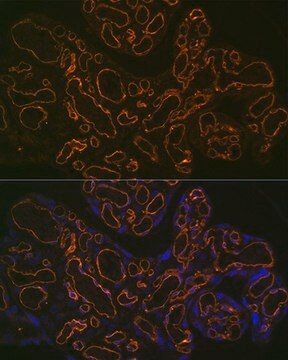MAB3067
Anti-Connexin 43 Antibody, clone 4E6.2
clone 4E6.2, Chemicon®, from mouse
Synonym(s):
Gap junction 43 kDa heart protein, connexin 43, gap junction protein, alpha 1, 43kDa, gap junction protein, alpha 1, 43kDa (connexin 43), gap junction protein, alpha-like
About This Item
Recommended Products
biological source
mouse
Quality Level
antibody form
purified immunoglobulin
antibody product type
primary antibodies
clone
4E6.2, monoclonal
species reactivity
mouse, rat, pig, canine
species reactivity (predicted by homology)
human
manufacturer/tradename
Chemicon®
technique(s)
ELISA: suitable
immunocytochemistry: suitable
immunohistochemistry: suitable
western blot: suitable
isotype
IgG1
NCBI accession no.
UniProt accession no.
shipped in
wet ice
target post-translational modification
unmodified
Gene Information
human ... GJA1(2697)
General description
Specificity
Immunogen
Application
Cell Structure
Adhesion (CAMs)
1:1000-10,000 freshly prepared lysates, proteinase inhibitors are recommended. Recognizes proteins of molecular weight 43-47 kDa on Western blots of mouse brain lysate.
Immunocytochemistry:
A 1:50-1:250 dilution of a previous lot was used in immunocytochemistry.
Immunohistochemistry:
A previous lot was used to detect Connexin 43 expression in the keratinocytes of the middle and upper epidermal layers of frozen human skin tissue (Arita, Ken, et al. (2006). Am. J. Pathol. 169:416-423).
Immunohistochemistry:
A previous lot was used to detect Connexin 43 expression in human and rat heart tissue (1:500 dilution).
ELISA:
A previous lot of this antibody was used in ELISA.
Optimal working dilutions must be determined by end user.
Quality
Western Blot Analysis:
1:1000 dilution of this antibody detected Connexin 43 on 10 μg of rat brain lysates
Target description
Physical form
Storage and Stability
Analysis Note
Mouse brain tissue lysate
Other Notes
Legal Information
Disclaimer
Not finding the right product?
Try our Product Selector Tool.
recommended
Storage Class Code
12 - Non Combustible Liquids
WGK
WGK 2
Flash Point(F)
Not applicable
Flash Point(C)
Not applicable
Certificates of Analysis (COA)
Search for Certificates of Analysis (COA) by entering the products Lot/Batch Number. Lot and Batch Numbers can be found on a product’s label following the words ‘Lot’ or ‘Batch’.
Already Own This Product?
Find documentation for the products that you have recently purchased in the Document Library.
Our team of scientists has experience in all areas of research including Life Science, Material Science, Chemical Synthesis, Chromatography, Analytical and many others.
Contact Technical Service